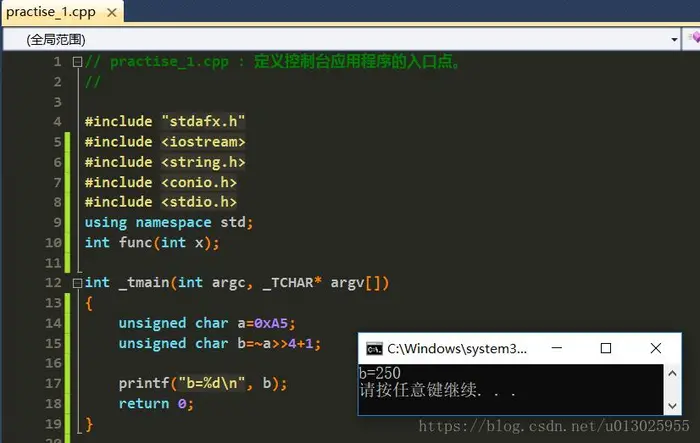1.练习代码
#include "stdafx.h"
#include <iostream>
#include <string.h>
#include <conio.h>
#include <stdio.h>
using namespace std;
int func(int x);
int _tmain(int argc, _TCHAR* argv[])
{
unsigned char a=0xA5;
unsigned char b=~a>>4+1;
printf("b=%d\n", b);
return 0;
}
2.关键点分析
2.1转换过程
#include "stdafx.h"
#include <iostream>
#include <string.h>
#include <conio.h>
#include <stdio.h>
using namespace std;
int func(int x);
int _tmain(int argc, _TCHAR* argv[])
{
unsigned char a=0xA5;
unsigned char b=~a>>4+1;
printf("b=%d\n", b);
return 0;
}
2.2运行结果

